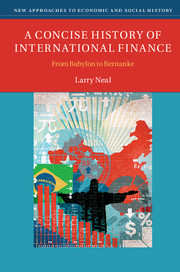Book contents
- Frontmatter
- Contents
- List of figures
- List of boxes
- List of tables
- Preface
- 1 Introduction
- 2 Distant beginnings: the first 3,000 years
- 3 The Italians invent modern finance
- 4 The rise of international financial capitalism: the seventeenth century
- 5 The “Big Bang” of financial capitalism: financing and re-financing the Mississippi and South Sea Companies, 1688–1720
- 6 The rise and spread of financial capitalism, 1720–1789
- 7 Financial innovations during the “birth of the modern,” 1789–1830: a tale of three revolutions
- 8 British recovery and attempts to imitate in the US, France, and Germany, 1825–1850
- 9 Financial globalization takes off: the spread of sterling and the rise of the gold standard, 1848–1879
- 10 The first global financial market and the classical gold standard, 1880–1914
- 11 The Thirty Years War and the disruption of international finance, 1914–1944
- 12 The Bretton Woods era and the re-emergence of global finance, 1945–1973
- 13 From turmoil to the “Great Moderation,” 1973–2007
- 14 The sub-prime crisis and the aftermath, 2007–2014
- References
- Index
7 - Financial innovations during the “birth of the modern,” 1789–1830: a tale of three revolutions
Published online by Cambridge University Press: 05 October 2015
- Frontmatter
- Contents
- List of figures
- List of boxes
- List of tables
- Preface
- 1 Introduction
- 2 Distant beginnings: the first 3,000 years
- 3 The Italians invent modern finance
- 4 The rise of international financial capitalism: the seventeenth century
- 5 The “Big Bang” of financial capitalism: financing and re-financing the Mississippi and South Sea Companies, 1688–1720
- 6 The rise and spread of financial capitalism, 1720–1789
- 7 Financial innovations during the “birth of the modern,” 1789–1830: a tale of three revolutions
- 8 British recovery and attempts to imitate in the US, France, and Germany, 1825–1850
- 9 Financial globalization takes off: the spread of sterling and the rise of the gold standard, 1848–1879
- 10 The first global financial market and the classical gold standard, 1880–1914
- 11 The Thirty Years War and the disruption of international finance, 1914–1944
- 12 The Bretton Woods era and the re-emergence of global finance, 1945–1973
- 13 From turmoil to the “Great Moderation,” 1973–2007
- 14 The sub-prime crisis and the aftermath, 2007–2014
- References
- Index
Summary
Had Napoleon fully understood the possibilities of Dutch finance for financing and provisioning his armies, he might have been able to establish his empire over Continental Europe. As it turned out, despite his brilliant efforts at re-shaping French public finances and re-organizing the French military, he failed to coordinate successfully banks, capital markets, and financial regulation for France and paid scant attention to the financial institutions in satellite kingdoms. To finance his imperial ambitions, however, Napoleon did appreciate the merits of Britain's financial innovations that had stymied the advances of the French revolutionary armies on the Continent. After assuming power in the coup of 18 Brumaire (November 9–10, 1799), he quickly imitated the essential features of British finance, at least as he saw them. He established the Banque de France in 1800, re-vitalized the Caisse d'amortissement pour la dette publique, and reconstituted the Bourse de Paris. With these three organizations, Napoleon mimicked the financial structure of Britain with its Bank of England, sinking fund (Commissioners for the Reduction of the National Debt), and London Stock Exchange. All of these had proven their worth in helping Britain finance its successful wars against France over the past century. But, like John Law nearly a century earlier, Napoleon felt that all these financial organizations would function even more effectively if he kept them under central control, whether by himself or by trusted civil servants. His constant intervention in the management of the national debt continually frustrated his minister in charge, Count Mollien. Further, his insistence on levying massive annual contributions from satellite kingdoms raised by new, heavier taxes undercut the legitimacy of the new regimes he created throughout Continental Europe.
Despite his incomprehension of the subtleties of British public finance, anchored in deeply rooted commercial finance both at home and abroad, Napoleon clearly understood the importance for the economic system he created on the European Continent of enforcing impersonal exchanges through constant monitoring by individuals connected to each other through a multitude of relationships. At the same time his armies occupied a country, he created a network of personal enforcers of exchanges. By installing members of his family or trusted generals as rulers of unified kingdoms throughout Continental Europe, Napoleon mimicked in many ways the networks of trusted correspondents that merchant bankers in Europe had established in previous centuries.
- Type
- Chapter
- Information
- A Concise History of International FinanceFrom Babylon to Bernanke, pp. 134 - 165Publisher: Cambridge University PressPrint publication year: 2015

